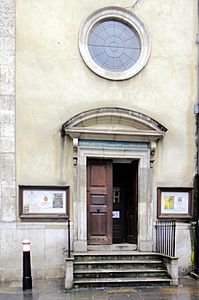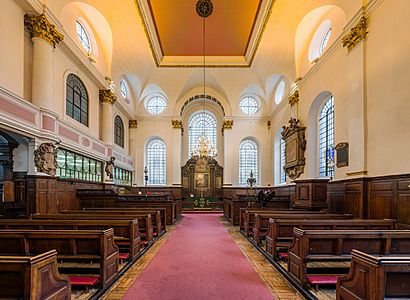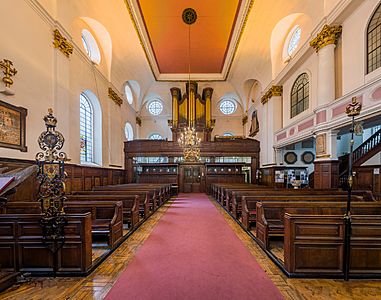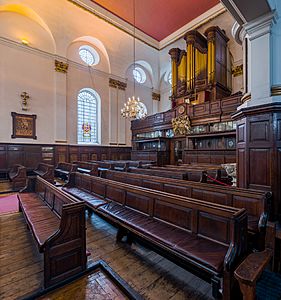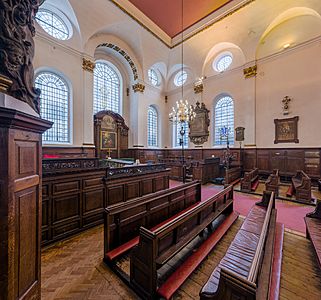St Margaret Pattens facts for kids
Quick facts for kids St Margaret Pattens |
|
|---|---|
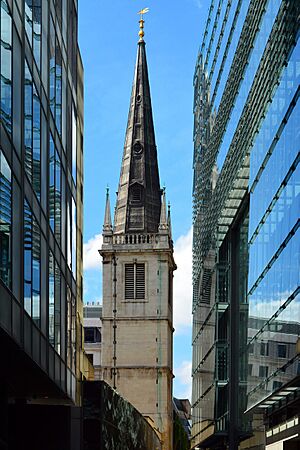
View of the church from Plantation Lane
|
|
| Location | London, EC3 |
| Country | United Kingdom |
| Denomination | Anglican |
| Architecture | |
| Heritage designation | Grade I listed building |
| Architect(s) | Sir Christopher Wren |
| Administration | |
| Diocese | London |
St Margaret Pattens is a historic Church of England church. It is located in the City of London, close to the famous Monument. The church is named after Saint Margaret of Antioch.
Contents
A Look Back in Time
The first mention of this church was in 1067. Back then, it was probably made of wood. Later, it was rebuilt using stone. However, it eventually fell apart and had to be pulled down in 1530. A new church was built in 1538. Sadly, this building was destroyed in the terrible Great Fire of London in 1666.
The church you see today was built by the famous architect Sir Christopher Wren. He finished it in 1687. This church is special because it was one of the few City churches that did not get badly damaged during the Second World War.
In 1954, St Margaret Pattens changed its role. It became one of London's "guild churches." These churches usually have people who work in nearby offices attend services during the week. The church tower also holds the office of the Archdeacon of Hackney. The church was officially named a Grade I listed building on January 4, 1950. This means it is a very important historical building.
What the Church Looks Like
The Tall Spire
The outside of the church is famous for its very tall spire. It reaches 200 feet into the sky. This spire was the third tallest designed by Sir Christopher Wren. It is also special because it is the only one he designed in an old medieval style. Some people even call it Wren's only "true spire."
Inside the Church
The inside of the church is a simple rectangle shape. It has some unique features. You can see the only canopied pews in London here. These special seats date back to the 17th century. They were made for the churchwardens, who helped manage the church. You might spot the initials "CW" on one of these pews. Some think this stands for Christopher Wren, but it could also mean "church warden." Another interesting item inside is a "punishment box." This box is carved with a Devil's head. People who misbehaved had to sit in it during church services.
How the Church Got Its Name
The name of the church, "Pattens," has an interesting story. It is traditionally believed to come from pattens. These were special overshoes with wooden soles. Later, they had raised iron rings. People wore them to walk on the muddy streets of London without getting their feet dirty. Parishioners were asked to take them off before entering the church. The church has long been connected to the Worshipful Company of Pattenmakers, a group of people who made these shoes.
There is another idea about the name. It might remember a person named Ranulf Patin. He was a canon at St Paul's Cathedral a long time ago. However, it was very unusual for a church to be named after someone who gave money.
Gallery
See also


